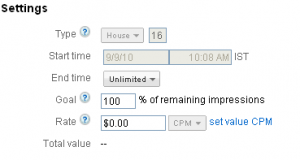Generate Privacy Policy, Terms & Conditions, Disclosure For Your Website Online
If you are an individual blogger or someone who sells items or products online, it’s important from moral and legal standpoint to have a privacy policy and terms & conditions webpage on your website. Privacy policy and terms and conditions should clearly set forth the rules and conditions for user conduct, content, age criteria, refunds etc. Now even Google Ad-sense requires publishers to have a privacy policy which at least talks about cookie creation by Ad Sense.
If you are among those who have no idea on how to go about creating a privacy policy or do not have adequate funds to hire a legal council, there are websites which can help you generate privacy policy and terms and conditions content for free by just answering few questions about your website.
Here is a list of websites you can use to create Privacy Policy and Terms & conditions page:
- http://www.bennadel.com/coldfusion/privacy-policy-generator.htm: Generates basic Privacy policy and terms & conditions. You also get HTML code for easy integration.
- http://www.generateprivacypolicy.com: Easy to use wizard but requires registration.
- http://www.serprank.com/privacy-policy-generator/: Easily generate privacy policy as required by Google AdSense.
- http://www.freeprivacypolicy.com/free-privacy-policy-generator.php: Generate privacy policy by just answering few questions.
There are more such websites. You can Google and select the one which fits the bill.
Generating Disclosures
If you run a blog or a product review website / blog, it is advisable to have a disclosure on your website or blog so that readers know whether your posts /reviews can be biased or are influence by some factors. Disclosure brings trust to your website.
You can head to http://disclosurepolicy.org to generate a disclosure policy. It’s just a 6 step process to create a disclosure policy on this website.
P.S. YourTechStory (YTS) will soon have a privacy policy.

